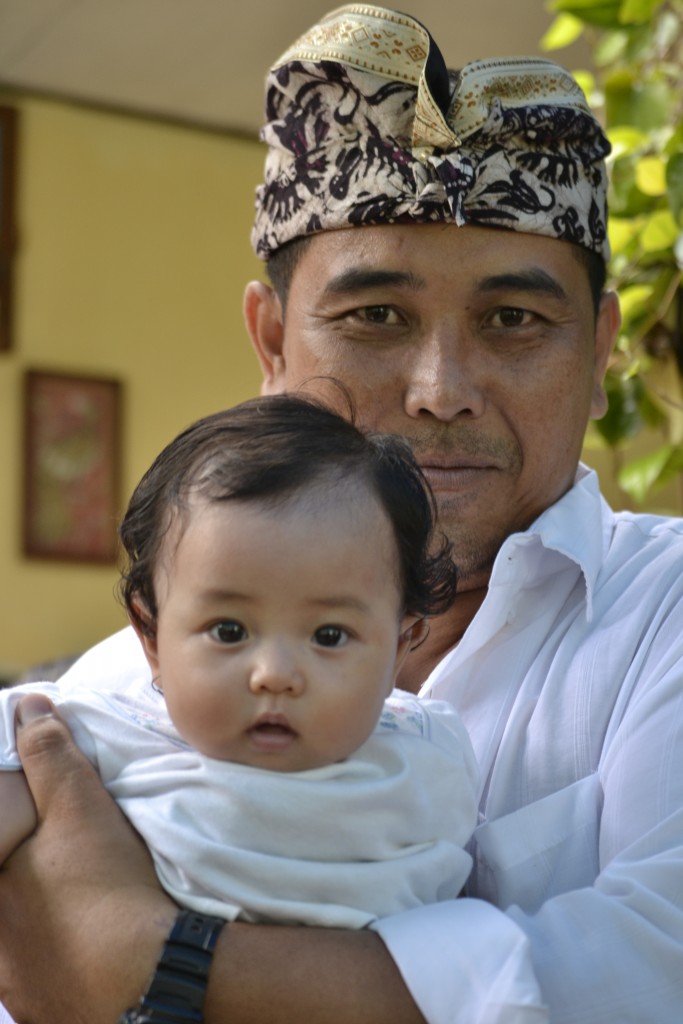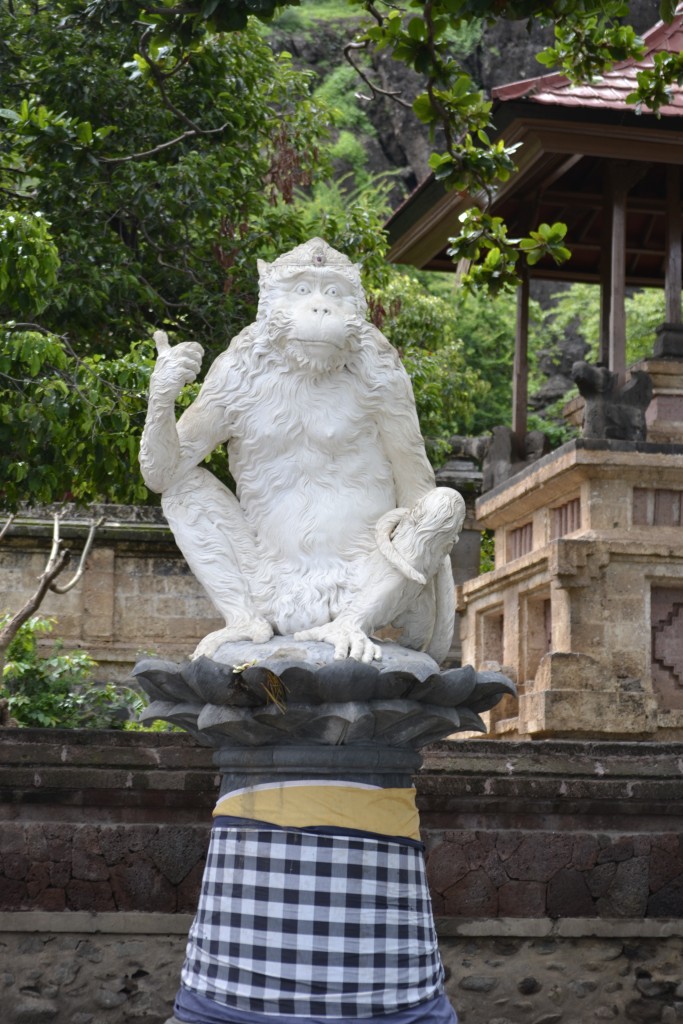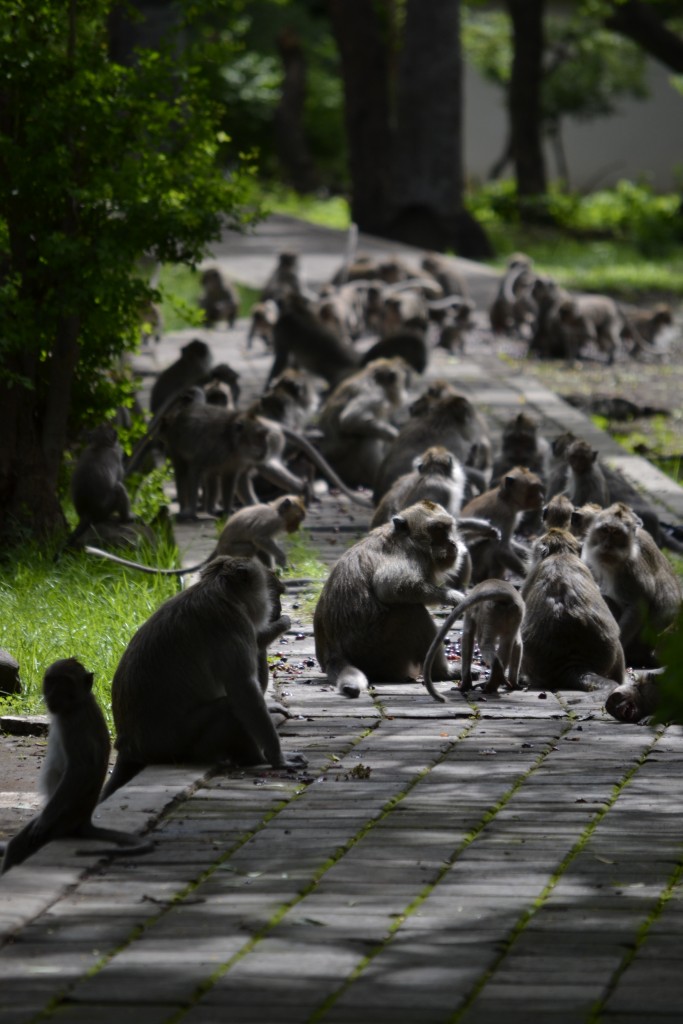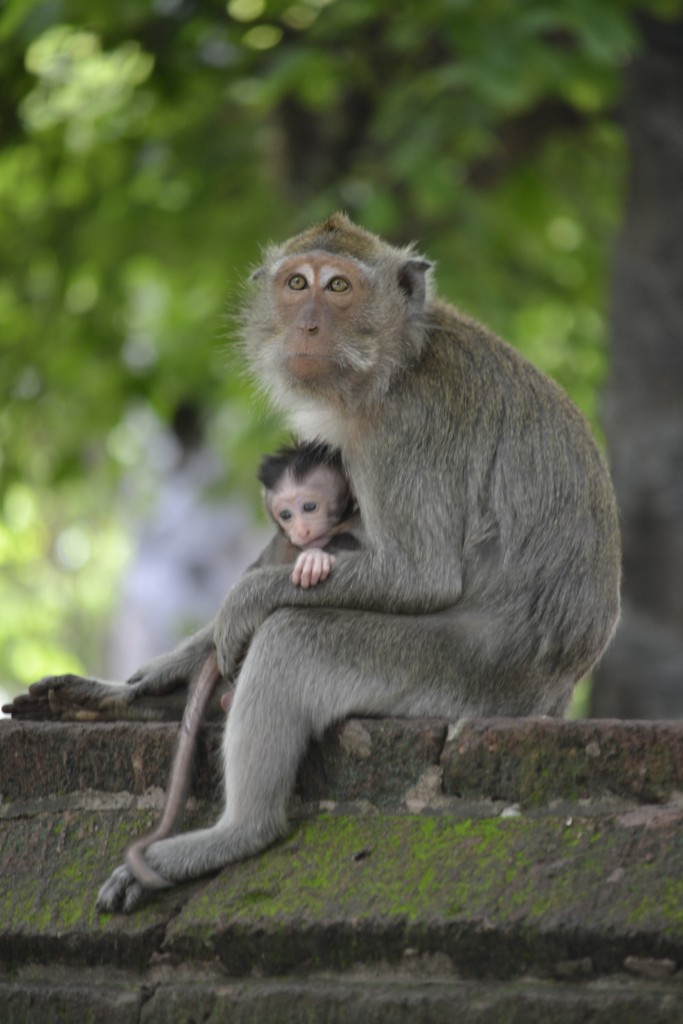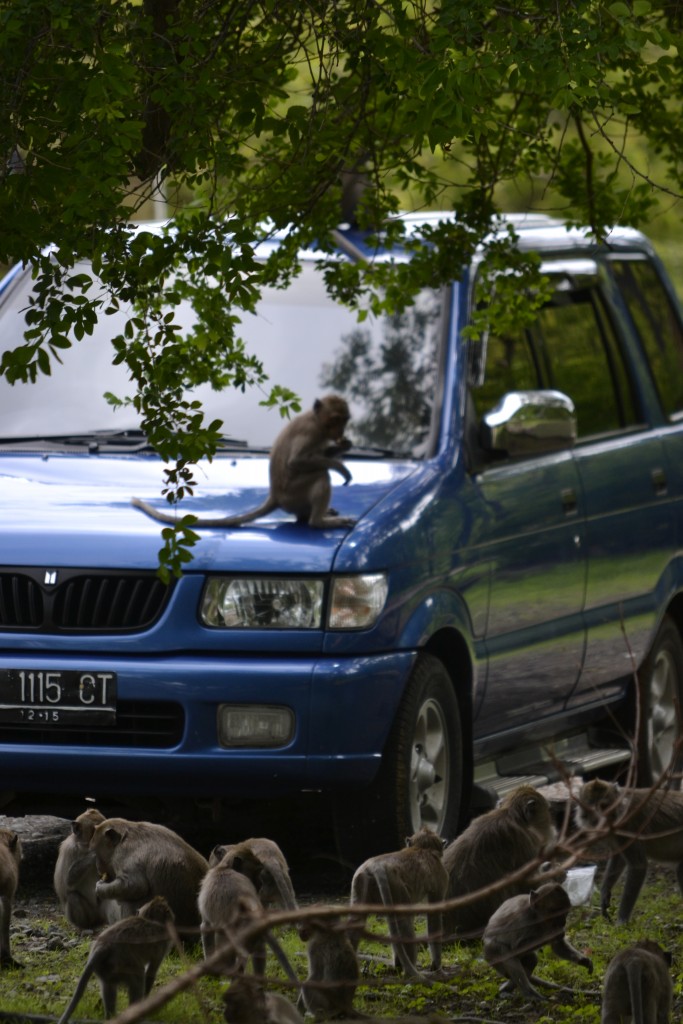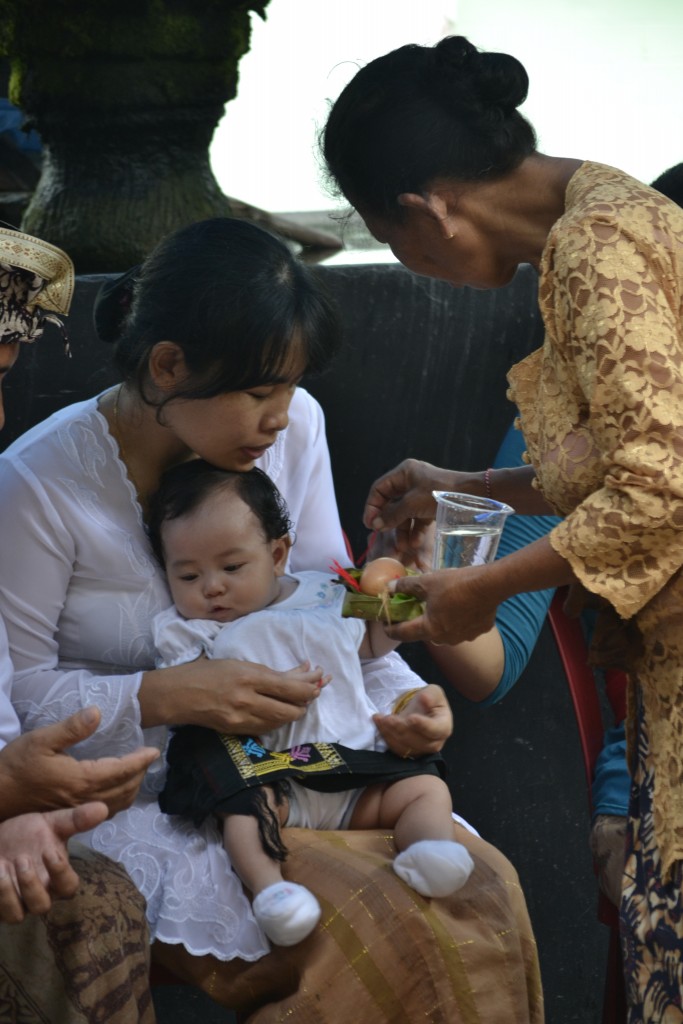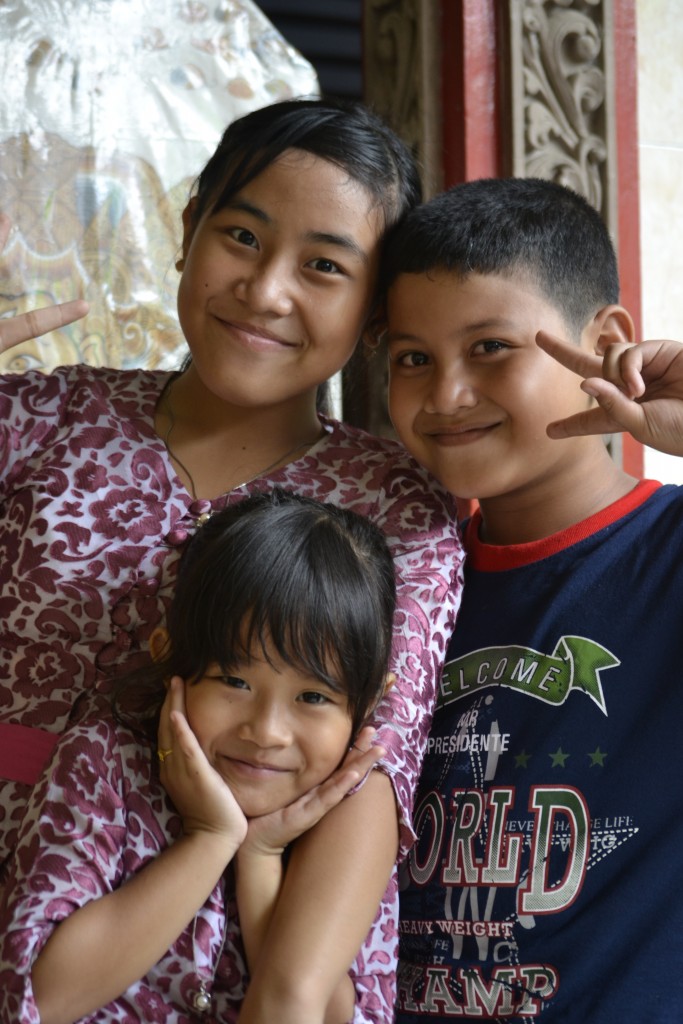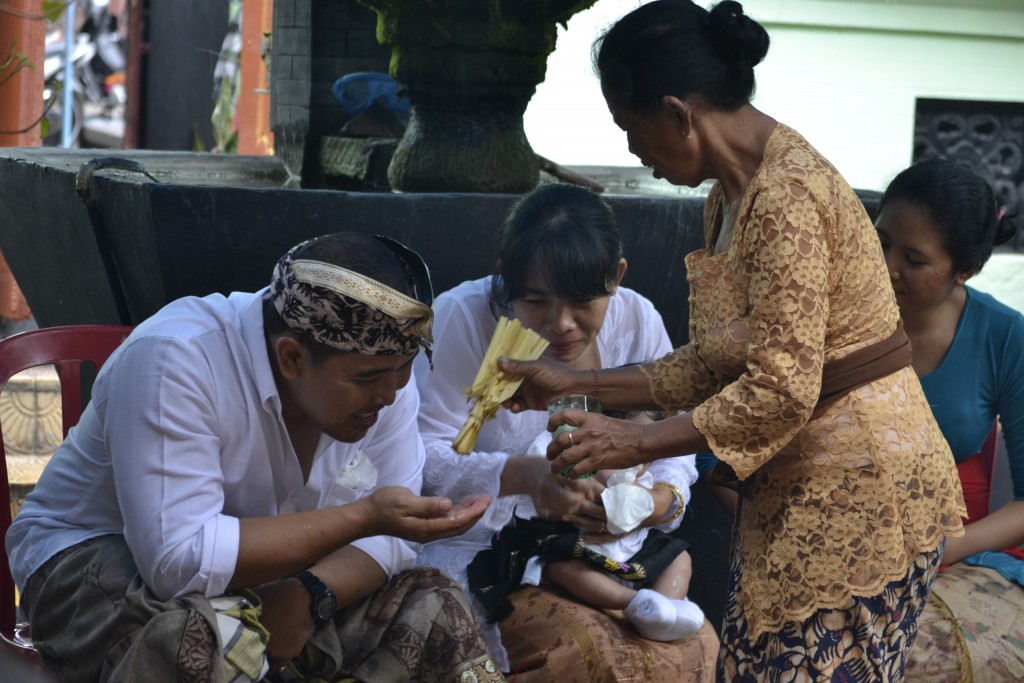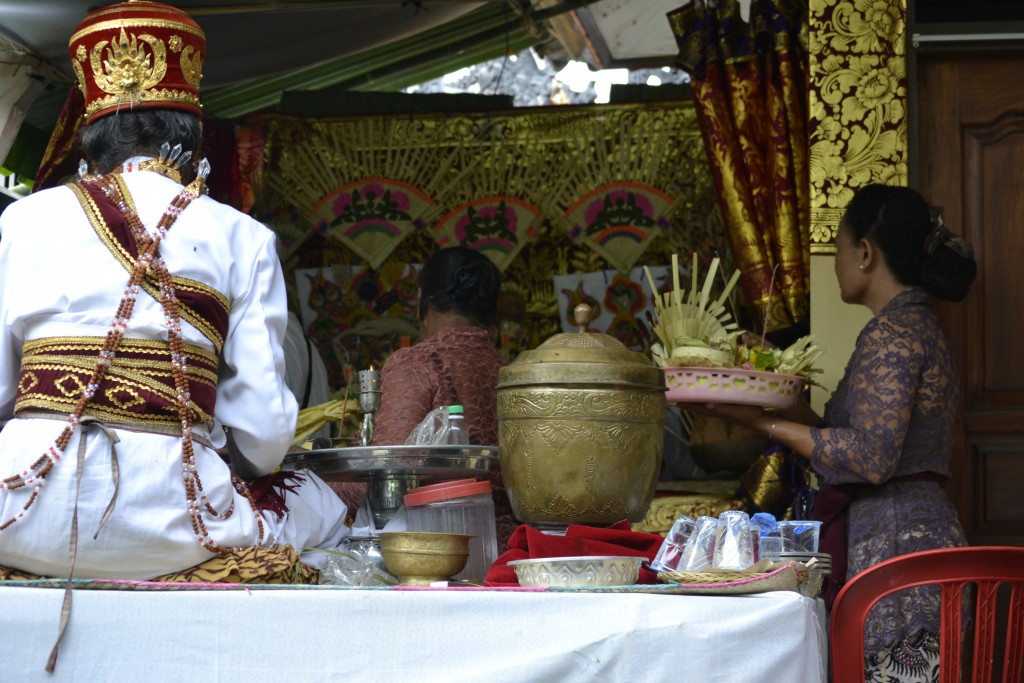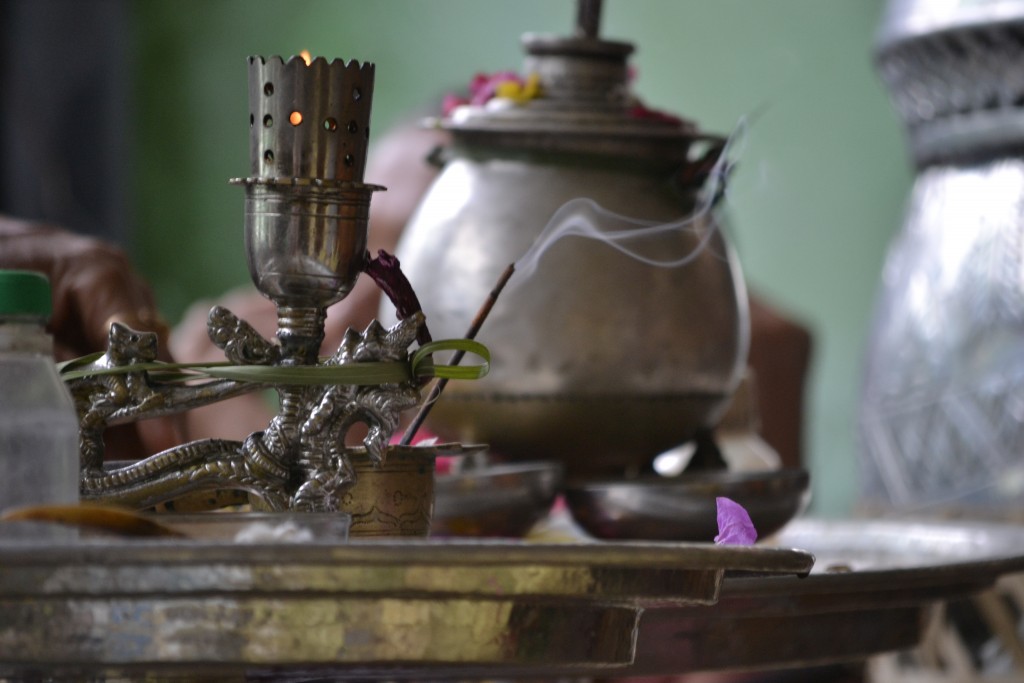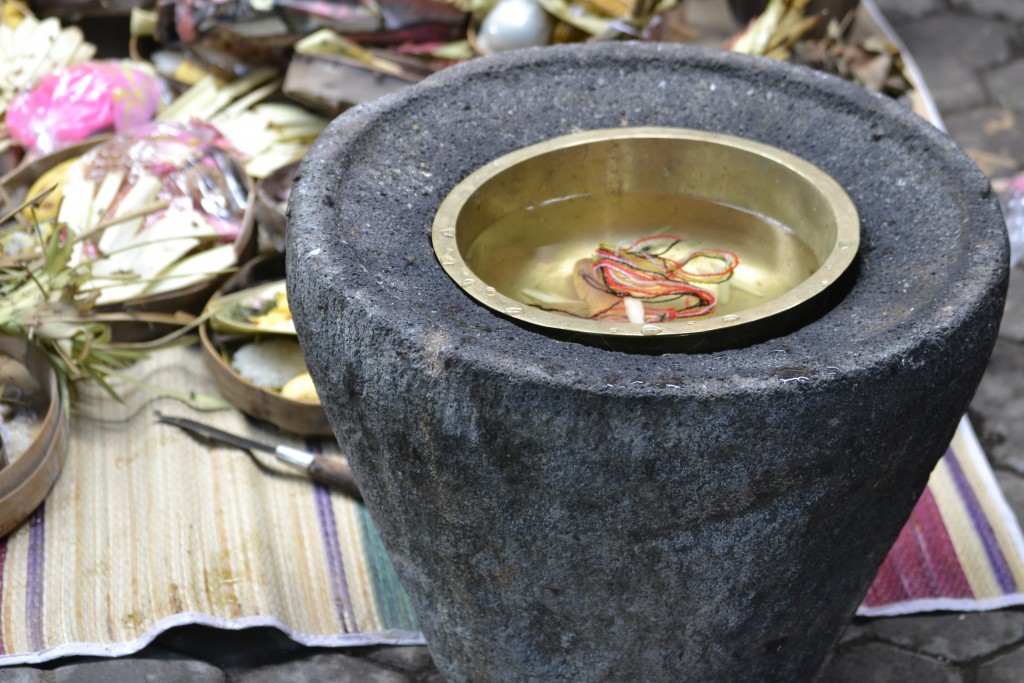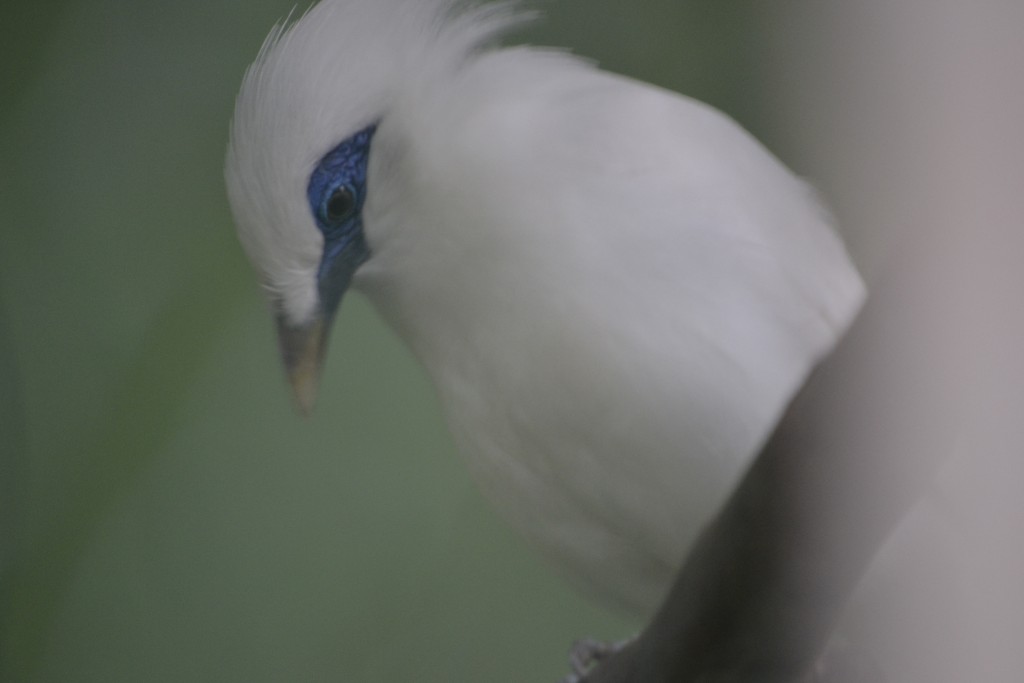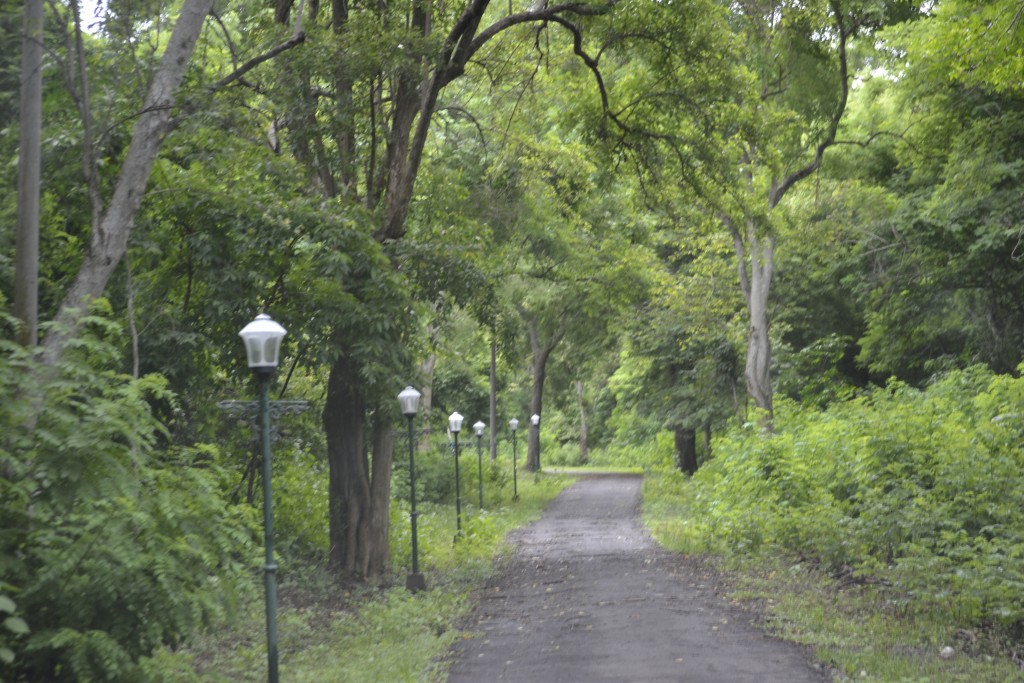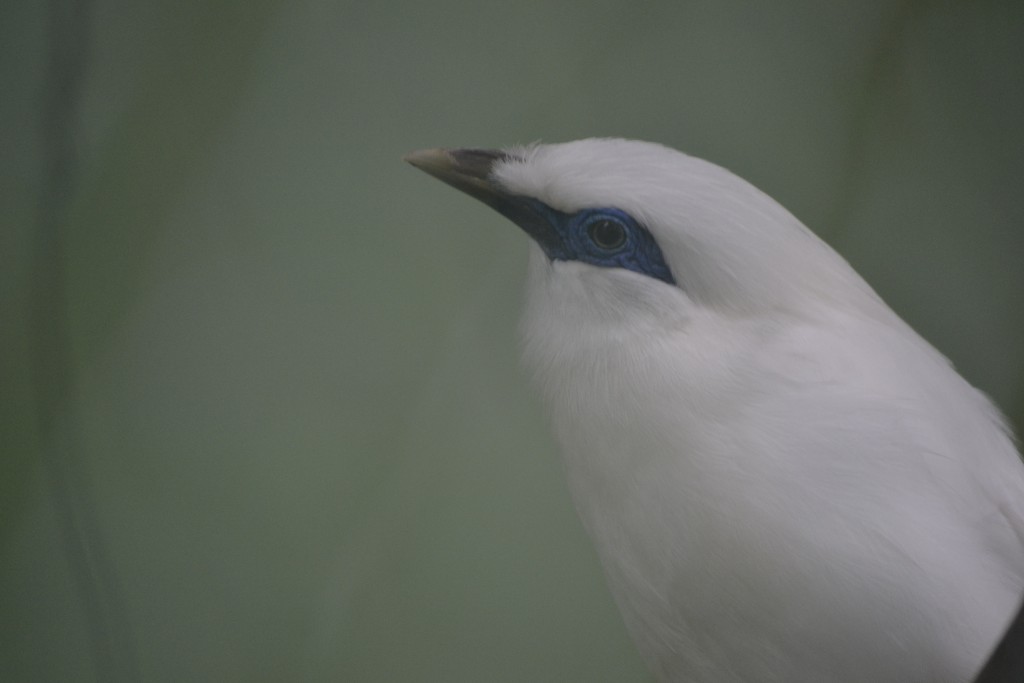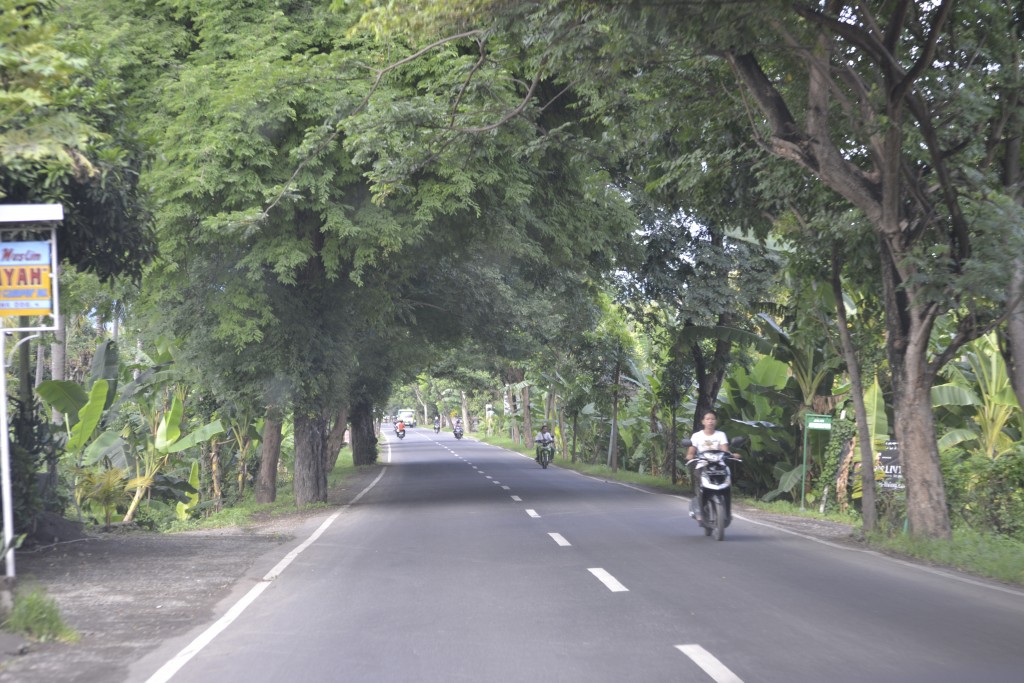 Visiting a friend while on vacation in Bali, I was invited to a Hindu Nelubulanin Ceremony, a religious gathering that takes place when a child reaches the age of three months. According to Hindu beliefs, a child born to a family is considered a god until their three month ceremony which is one of the most rights of passage celebrations of the Hindu faith.
Visiting a friend while on vacation in Bali, I was invited to a Hindu Nelubulanin Ceremony, a religious gathering that takes place when a child reaches the age of three months. According to Hindu beliefs, a child born to a family is considered a god until their three month ceremony which is one of the most rights of passage celebrations of the Hindu faith.
The Sunarsas picked me up at my hotel and we began our journey towards the northwestern side of the island. After a three hour drive and a stop along the way, we arrived in the residential town of Gilimanuk.
We set out early in the morning so that Wayan and his family could present their daily offering at the Monkey Temple. The traffic was light and the scenic drive included views of the ocean as well as statuesque trees that lined the roadway.
Prior to entering the village of Pemuteran, home to the Monkey Temple, there were several other Balinese sanctuaries situated along the coast. Among some of the most dramatic scenery, these places of worship are essential to the every day customs of the Balinese Hindus.
The cliffs behind the Pura Agung Pulaki temple are where the monkeys reside. According to Balinese legend, these monkeys are believed to be descendants of ancient guardians of the temple that once inhabited the island.
The Balinese believe that the reincarnated monkeys continue to provide protection to this magnificent temple. They are known by locals as the “Wong Samar” or “Gamang”.
The Sunarsa family entered the temple, prayed and left their offerings inside. It was hardly fifteen minutes when they emerged and met me outside where the active monkeys filled the sidewalks.
Returning to the vehicle, we noticed over fifty monkeys invading the walkway and curiously exploring the hood of our car and hopping onto the roof. Candra, Wayan’s wife, explained that these macaques are quite familiar with humans but can be aggressive if provoked. As we slowly walked towards the car, the monkeys began to scatter towards the trees and we continued our drive towards the coast.
Within an hour and a half, we arrived at the home where the Nelubulanin Ceremony would be taking place. On the drive over, Wayan explained the purpose of the celebration and its meaning.
According to the Balinese Hindus, until the day of the child’s three month celebration, the baby is a divine creature and is not permitted to touch the ground with his or her feet. They believe that the child is pure and sacred and must stay clean before the ceremony to connect with Mother Earth.
Family and friends will bring trinkets and blessings to the child to ensure that they are prosperous, healthy and have a joyous life. A priest is also in attendance to perform the ceremony and acts as an intermediary with the gods.
Celebrations are not only a part of the Hindu religion but of the Balinese culture. Large gatherings of family members and friends come together to celebrate, memorialize or mourn their loved ones. It is customary that relatives bring a dish for these celebrations and the food that day was an amazing spread of delicious Balinese foods.
The family of the child prepare themselves for the ritual by participating in a purification ritual. The parents also ready the baby by adorning him or her with jewelry such as earrings, necklaces and bracelets.
Many offerings are presented to the high priest in attendance and he prays over the items that have been prepared for the ceremony.
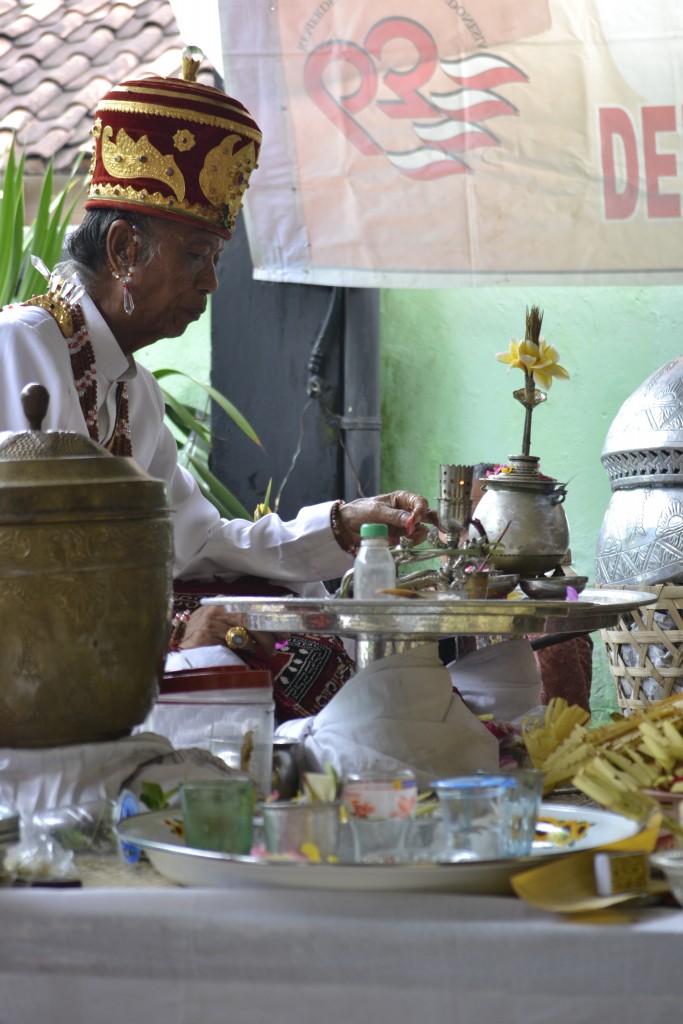 The Hindu priest facilitates the offerings and various rites of the event. He is seated on a platform among the offerings, water and incense. He is in a continual state of prayer that includes chants in the ancient Sanskrit language.
The Hindu priest facilitates the offerings and various rites of the event. He is seated on a platform among the offerings, water and incense. He is in a continual state of prayer that includes chants in the ancient Sanskrit language.
During this time, the family simultaneously presents their offerings to the priest and praying to the Hindu gods. The contributions are strategically placed within a designated square platform representing goodwill and protection towards the child.
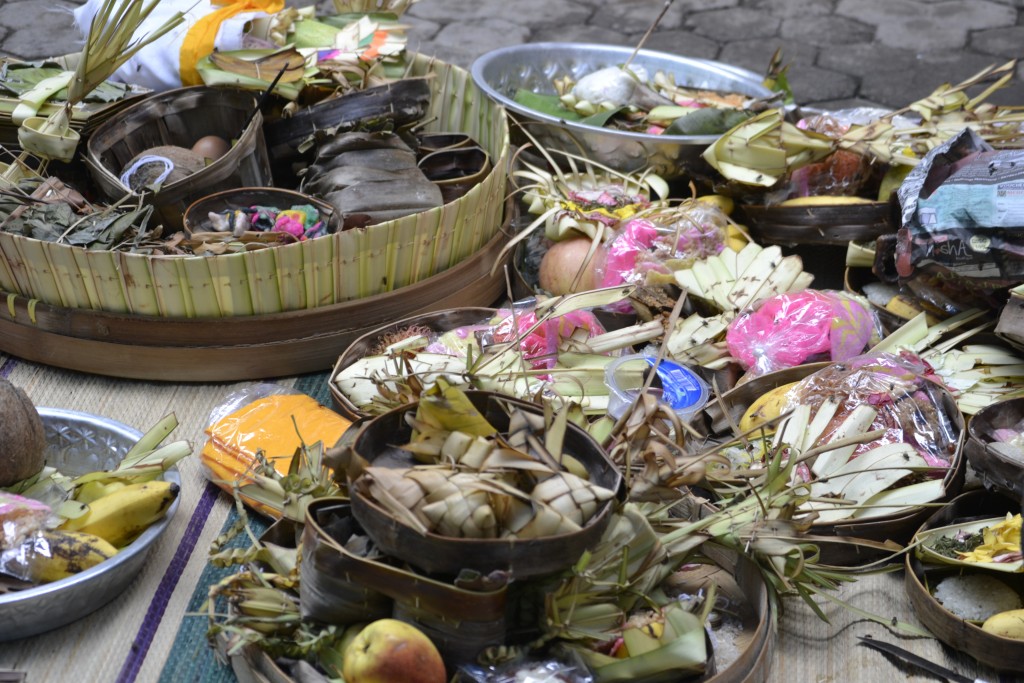
The large number of offerings include earthly items that symbolize the state of the child’s future on earth. For example, leaves with inscriptions represent wisdom and intelligence, coins represent wealth and jewelry symbolizes the need for desire.
Fruit and grains of rice and corn represent the child’s future hard work and diligence. The water containing a goldfish symbolizes the pond of life. The climax of the ceremony is when the family places the child in the center of the small objects and watches as the child selects one of these items which will represent how he will live his life.
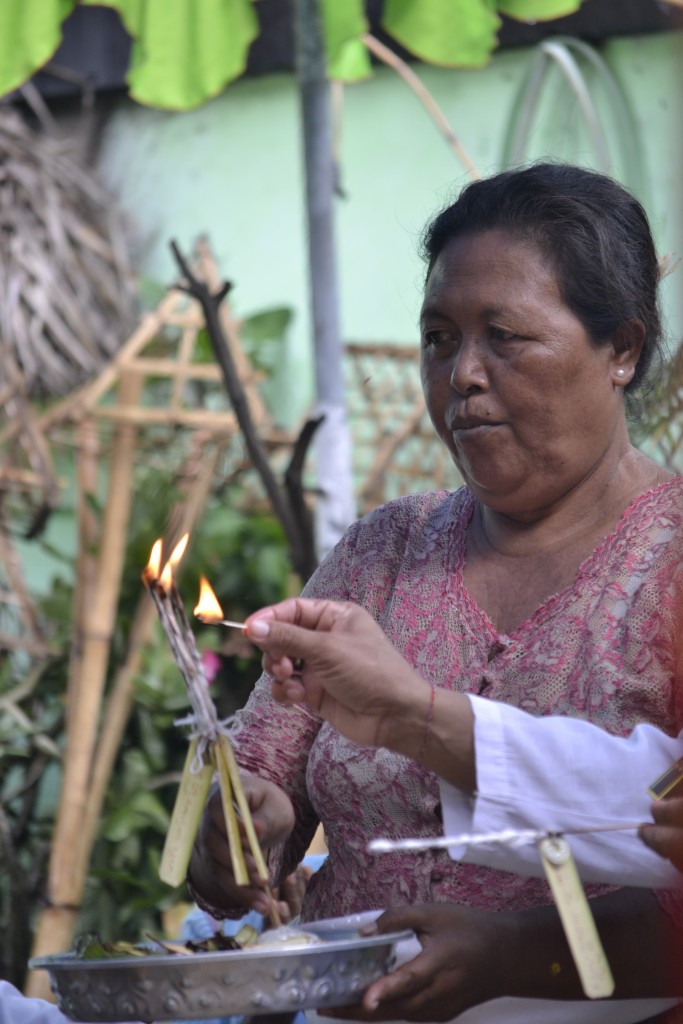
The child is carried around the symbolic offerings three times which represent birth, life and death. Once the ceremony is completed, the family gathers around to enjoy each other’s company at a wonderful feast which usually includes the suckling pig (babi buling) as well as a wide variety of other Indonesian foods and fruits. It is a joyous time for the family and their friends and lasts throughout the day.
Male Bali Starling
We stayed long enough to eat and enjoy each others company. Before sunset, we began the drive back to Lovina Beach. Nearing the halfway mark of our journey, the family eagerly suggested a stop at the Bali Barat National Park, a sanctuary for the country’s native bird, the Bali Starling. The reserve was established to protect these beautiful birds from extinction as locals trap them to keep them as pets for good luck.
Turning into the park, the entrance was paved and lampposts lined the driveway. The mangrove forest surrounding us is also home to more monkeys and a protected species of cattle. Not far from the conservation is a popular dive site with a coral reef and a variety of unique, interesting salt water fish.
Female Bali Starling
With over 160 varied species of birds at the Bali Barat National Park, it is the Bali Starling that is the most sought after, and is one of the most endangered species of birds in the world. The Bali Starling Recovery Project was created to reintroduce the bird back into the island of Bali.
From the beautiful drive to Gilimanuk, attending the Nelubulanin Ceremony, and visiting the Bali Starling Recovery Project, I was happy to have spent the day in the lives of my Balinese friends. With the Balinese celebrating a variety of ceremonies over the course of a year, it is unusual that an outsider would be invited to participate in the festivities. I felt honored to have experienced the ceremonial celebration. I learned so many wonderful lessons that day. One, the importance of religion and family in the lives of the Indonesians and secondly, their love of sharing their country and values with those that have a respect for their culture.
Have you attended a ceremonial celebration from another culture? I would love to hear about your experience if you would kindly leave a message in the comments section below. Many thanks for following my adventures through Bali! Happy Travels!
What to See and What to Do:
Pulaki Temple
Jalan Seririt-Gilimanuk, Banyupoh, Gerokgak
Kabupaten, Buleleng, Bali, Indonesia
Telephone: +62 362 92380
- Admission Fee: Free
- Hours: Daily, open 24 hours
- Amenities: Public toilet, Beach, Food and Drink Stalls
- Scenic View: Beautiful views of the ocean from here and watching the monkeys is extraordinary!
- Length of the Tour: Less than 1 hour
- Tips for Your Visit: Dress appropriately for visiting the temple, covering your shoulders and knees. Watch out for the monkeys on the inside and outside of the temple as they are known to steal car keys, sunglasses, etc. Inside there are plenty of cats, which keep to themselves.
Bali Barat National Park
Kantor Pos Gilimanuk
Cekik, 82253, Bali, Indonesia
Telephone: +62 365 61060
- Admission Fee: To tour the park, the cost is 10,000 Rupiah (IDR) during the weekday and 15,000 Rupiah (IDR) during the weekend. Because certified guides are required to trek through the park, the costs are varied (i.e., 2 hour trek = 150,000 IDR for 1 – 2 persons and 250,000 IDR for three to five persons).
- Hours: Daily, open from dawn to dusk (open for overnight camping)
- Amenities: Local Guides, Beach, Hiking, Snorkeling, Diving, Animal Reserve, Birding, Food and Drink Stalls
- Scenic View: Beautiful views of the ocean from here and visiting the unique animals is fascinating!
- Length of the Tour: Varies, depending on the activities you select
- Tips for Your Visit: The best time to visit is from August to December which is the end of the dry season and start of the rainy season. I would also suggest going early in the day to watch the sunrise! The birding excursions are the most popular.
Where to Stay:
Nirwana Water Garden
Lovina Beach Street
Lovina Beach Bali
Nirwana Water Garden is located in the heart of Lovina Beach. It is a 45-minute drive to the dive site of Menjangan Island. Ngurah Rai International Airport is a 2.5-hour drive away. The hotel can provide hotel transfers for a fee.
Nirwana Restaurant serves Indonesian specialties, with the option of in-room dining. Guests can enjoy a guided tour to visit the dolphins at Lovina Beach, which can be arranged by the Nirwana’s staff.
Where to Eat:
Warung Ibu Wina
Jalan Mawar , Kalibukbuk, Lovina Beach, Anturan
Buleleng, Bali 81152, Indonesia
Telephone: +62 813 3759 6912
I could not stop thinking about the Makso soup that I had tried on my first day in Bali. The ingredients were light and fresh and the soup was downright delicious. I searched out a warung (a small Indonesian cafe) to find a place where I could find this yummy chicken soup and came across Warung Ibu Wina.
What to Eat:
- Babi Guling: Suckling pig, which is similar to BBQ pork in the US.
- Bakso Soup: Indonesian soup made with meatballs, noodles, spices, vegetables and broth
- Gado-Gado: A cold salad of vegetables served with a peanut sauce
- Nasi Goreng: Fried noodles with lots of vegetables and a choice of meat, topped with peanuts and an egg.
- Pisang Goreng: Fried Bananas, served with palm sugar, honey, flaked coconut or ice cream
- Sate Ayam: Chicken on a stick usually served with a peanut sauce
- Spring Rolls: Crispy pastry filled with minced meat and mixed vegetables and then fried, usually served with a chili sauce
What to Read:
- Balilicious, by Becky Wicks
- Eat, Pray, Love, by Elizabeth Gilbert
- A House in Bali, by Colin McPhee
- Love and Death in Bali, by Vicky Baum
- Snowing in Bali, by Kathryn Bonella
- Under the Volcano: A story of Bali, by Cameron Forbes
Photo Guide for North Bali:
- Git Git Waterfall
- Mount Batur
- Sekumpal Waterfalls
- Tamblingan Lake
- Twin Lakes Viewpoint
